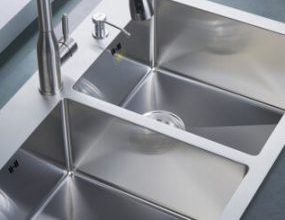Introduction:
In the vast cosmos that stretches beyond our planet, space exploration has seen remarkable advancements in technology and innovation. One such innovation is the nanosatellite, a miniature spacecraft that is changing the way we explore and understand space. In this article, we will delve into the fascinating world of nanosatellites, exploring their history, functions, and their significant contributions to space exploration.
1. What Is a Nanosatellite?
Nanosatellites, often referred to as “CubeSats,” are small, standardized spacecraft with dimensions typically measured in centimeters. The most common form is a 10x10x10 cm (1U) cube, but variations exist, such as 2U, 3U, and 6U configurations. These tiny satellites pack advanced technology into a small space, enabling them to conduct various missions in outer space.
2. A Brief History:
The concept of nanosatellites originated in the late 20th century, with the first CubeSat launched in 2003. Originally developed for educational purposes, these small satellites have evolved into versatile platforms for scientific research, technology demonstration, and commercial ventures.
3. Versatile Missions:
Nanosatellites have proven their versatility across an array of missions, from Earth observation to interplanetary exploration. Their small size and affordability make them a popular choice for universities, research institutions, and commercial entities looking to conduct experiments and collect data in space.
4. Earth Observation:
Nanosatellites are frequently employed for Earth observation missions. Equipped with various sensors and cameras, they capture images and data for applications like weather monitoring, disaster management, and environmental research.
5. Scientific Research:
Nanosatellites are crucial for scientific research beyond our planet. They have been used to study space weather, investigate cosmic phenomena, and explore celestial bodies such as asteroids and comets. Their compact size and affordability enable more frequent missions, increasing our understanding of the universe.
6. Technology Demonstration:
Nanosatellites are often used to test and demonstrate new space technologies. This includes propulsion systems, communication equipment, and miniature scientific instruments. Their relatively low cost reduces the financial risks associated with testing cutting-edge space tech.
7. Space Exploration:
Nanosatellites are venturing farther into space, contributing to interplanetary exploration. These small spacecraft accompany larger missions to planets, moons, and even asteroids. They can serve as scouts, gather data, and relay information back to Earth, expanding our knowledge of the solar system.
8. Accessibility and Affordability:
One of the most significant advantages of nanosatellites is their accessibility and affordability. Traditional satellite missions can be extremely costly, making it challenging for smaller organizations to participate in space exploration. Nanosatellites democratize access to space, enabling educational institutions, startups, and developing nations to engage in space activities.
9. Launch Opportunities:
Due to their compact size, nanosatellites can be launched as secondary payloads alongside larger spacecraft. This ride-sharing approach reduces launch costs and allows nanosatellites to reach their intended orbits efficiently.
10. Challenges and Limitations:
Despite their numerous benefits, nanosatellites do face challenges. Limited power, communication capabilities, and shorter lifespans are common limitations. The miniature size also restricts the complexity of payloads and instruments that can be accommodated.
11. The Future of Nanosatellites:
Nanosatellites are poised to play an increasingly significant role in space exploration. As technology advances, the capabilities of these small spacecraft will expand, enabling more ambitious missions and discoveries. Their affordability and accessibility will continue to drive innovation in space research and commercial ventures.
Conclusion:
Nanosatellites are revolutionizing the field of space exploration, offering new opportunities for scientific research, technology demonstration, and space missions. Their small size, affordability, and adaptability make them a powerful tool for universities, research institutions, and commercial entities looking to explore the cosmos. As we continue to push the boundaries of what’s possible in space, nanosatellites will undoubtedly be at the forefront of these groundbreaking endeavors, helping us unlock the secrets of the universe.
Check this out for more on nanosatellites.




